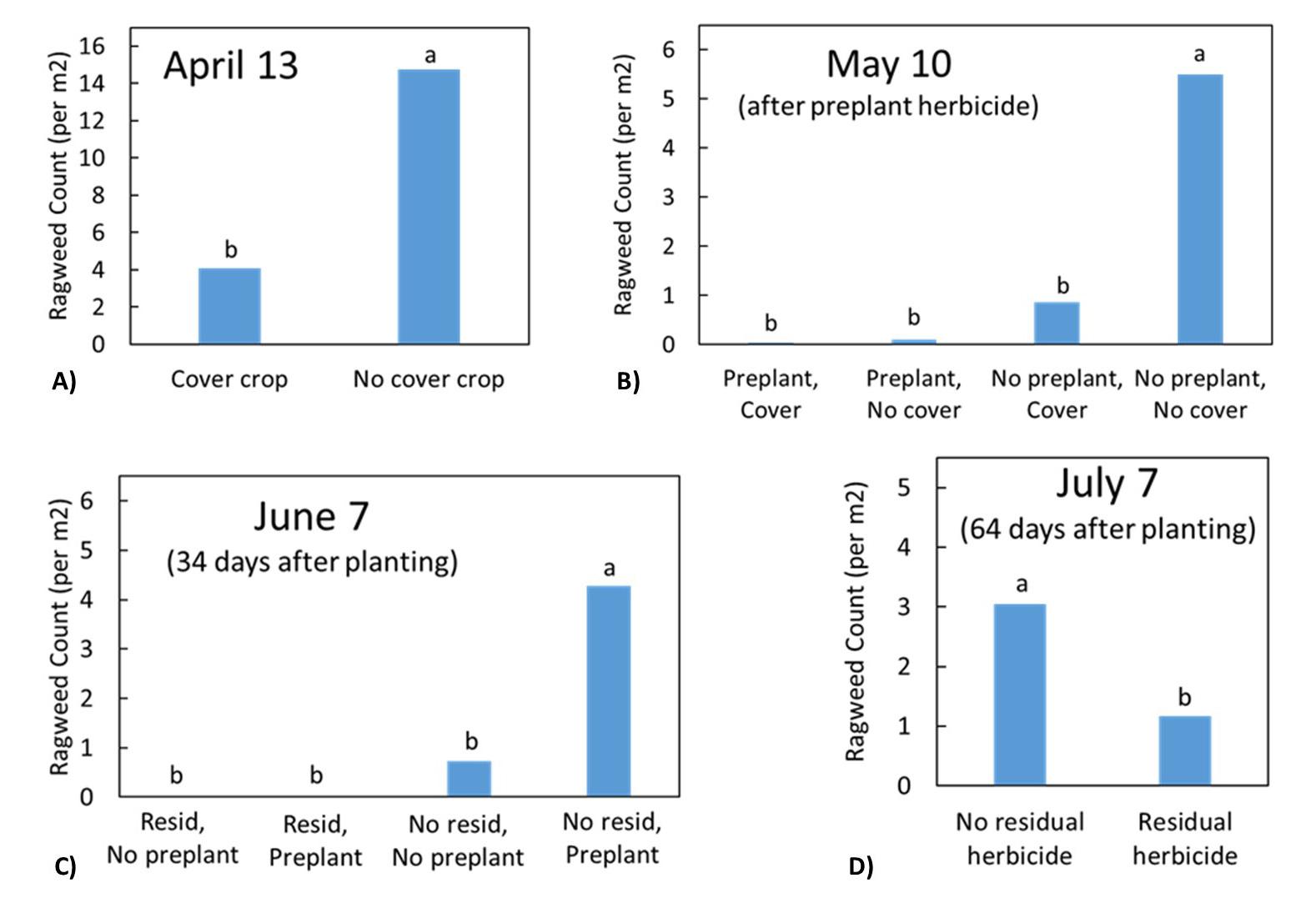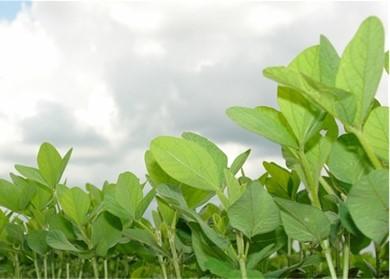Managing Herbicide Resistant Common Ragweed Emergence and Growth in Soybean With Cover Crops and Residual Herbicides
Herbicide resistant common ragweed (Ambrosia artemisiifolia L.) is prevalent on the Lower Eastern Shore of Maryland and other areas in the region. In 2019, common ragweed populations on the Eastern Shore of Maryland and Delaware were found to have two or three-way mode-of-action resistance to herbicides. They were resistant to glyphosate (group 9), cloransulam (Firstrate; group 2 “ALS inhibitors”), and/or fomesafen (Reflex; group 14 “PPO Inhibitors”). Early-season management of common ragweed is strongly dependent upon reducing seed emergence and controlling ragweed populations prior to soybean planting. However, due to the limited herbicides with efficacy against common ragweed, it is even more critical to utilize alternative and multiple means of control.
Objectives and Hypotheses:
In 2021 we performed an on-farm trial investigating if the presence of a wheat cover crop would decrease common ragweed prevalence. Cover crops can compete with weeds and reduce weed pressure. We also investigated if including a preplant herbicide and/or a residual herbicide at soybean planting time would decrease ragweed pressure. Residual herbicides are expected to reduce weed emergence for 3-4 weeks after they are applied.
Methods:
The study was conducted on a private farm in Snow Hill, MD. We had eight experimental treatments. Each treatment was replicated four times in the field. The factors assessed included wheat cover crop versus no cover crop, preplant herbicide versus no-preplant herbicide, and residual herbicide at planting versus no residual herbicide at planting. Table 1 lists each of the treatment combinations. The preplant herbicide of glyphosate + 2,4-D was applied April 20. The soybean was drilled May 4, 2021 in 7.5” rows. The at-planting burndown herbicide included glyphosate + Liberty, and in some treatments the residual herbicides of Linex + Dimetric.
| Treatment | Cover crop | Preplant herbicideᵃ | Residual herbicide at plantingᵇ |
|---|---|---|---|
| 1 | Yes | Yes | No |
| 2 | Yes | Yes | Yes |
| 3 | Yes | No | No |
| 4 | Yes | No | Yes |
| 5 | No | Yes | No |
| 6 | No | Yes | Yes |
| 7 | No | No | No |
| 8 | No | No | Yes |
ᵃ Preplant herbicide consisted of glyphosate + 2,4-D.
ᵇ At-planting herbicide consisted of glyphosate + Liberty or glyphosate + Liberty + Linex + Dimetric.
Results and Discussion:
The wheat cover crop grew to approximately 1,300 lb/acre when terminated mid-April and to approximately 2,000 lb/acre when terminated at soybean planting time in early May (Figure 1).

Common ragweed prevalence changed throughout the season and differed among different experimental treatments. On April 13, plots with a wheat cover crop had less common ragweed than plots with no cover crop (Figure 2a). On May 10, the plots that had a preplant herbicide applied had no common ragweed, regardless of having had a cover crop or not. However, plots that had no preplant herbicide applied had less common ragweed when a cover crop was present than when no cover was present (Figure 2b). On June 7 (34 days after soybean planting), the plots that had a residual herbicide applied at planting had no common ragweed.
However, on plots that had no residual herbicide applied, there was actually more common ragweed when a preplant herbicide had been applied as compared to when there was no preplant herbicide applied. In other words, applying two herbicide applications (preplant and at-planting) increased ragweed prevalence as compared to applying just one herbicide application at-planting (Figure 2c). This result could be explained by the fact that after the preplant herbicide is applied, there would be an open window for common ragweed to emerge, with no competition from the cover crop or other weeds in the field. On July 7 (64 days after soybean planting), the plots that had a residual herbicide applied at planting continued to have lower common ragweed prevalence than plots that had no residual herbicide applied at planting (Figure 2d).

Management Considerations:
Common ragweed primarily emerged in April and May; however, we did observe ragweed continuing to emerge throughout the summer. The presence of a wheat cover crop reduced ragweed prevalence, particularly early in the spring prior to herbicide applications. Common ragweed prevalence was the lowest when the wheat cover crop was burned down at soybean planting with the glyphosate/Liberty plus residual herbicide application. This treatment of just one burndown + residual herbicide application at planting provided better ragweed control than treatments that included two herbicide applications (preplant + at-planting applications). These results are encouraging as fewer herbicide applications will also result in lower herbicide related expenses.
This project was sponsored by the Maryland Soybean Board.
This article appears on November 2021, Volume 12, Issue 8 of the Agronomy news
